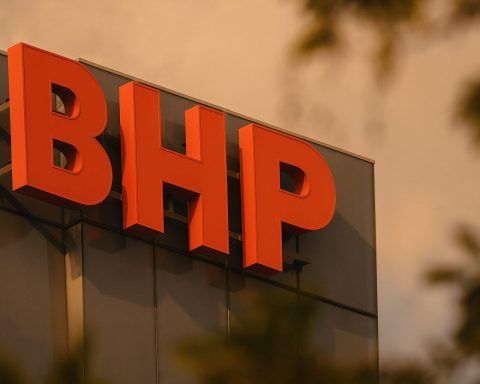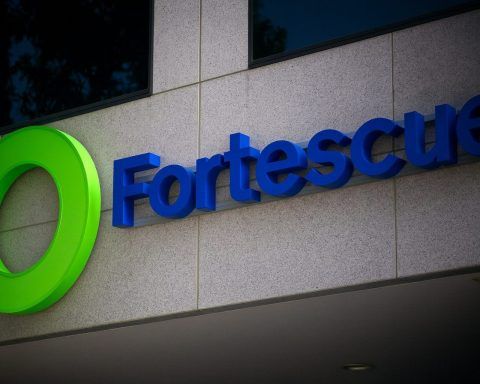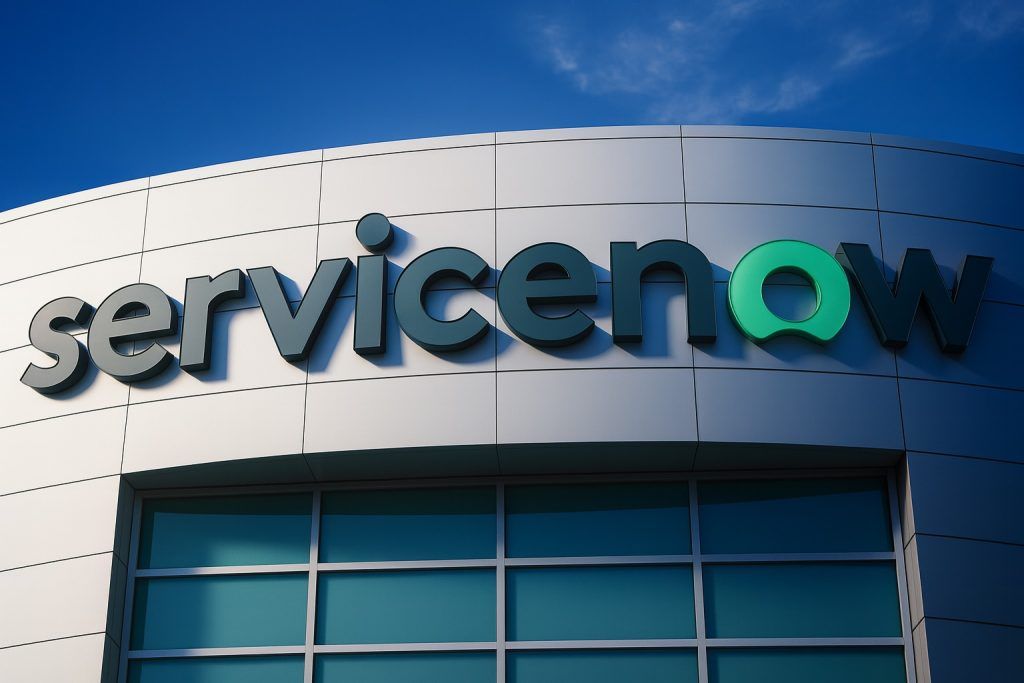- Shares Surge on Earnings: C.H. Robinson Worldwide (NASDAQ: CHRW) stock jumped over 20% to an all-time high around $149 after reporting third-quarter earnings that beat expectations [1] [2]. Investors cheered a strong profit performance driven by cost cuts and technology gains, despite a dip in revenue.
- AI & Cost Cuts Boost Profits: The logistics leader leveraged artificial intelligence and aggressive cost reductions to offset a 10.9% revenue decline amid weak freight demand [3] [4]. Adjusted Q3 earnings were $1.40 per share (vs. $1.30 expected) – a ~9% YoY increase – as operating expenses fell 12.6% and headcount was trimmed ~11% [5].
- Raised 2026 Outlook & Buyback: Management raised its 2026 operating income target by about $50 million to a new range of $965 million–$1.04 billion, implying roughly $6.00 in EPS (up from ~$5.6 consensus) [6]. Reflecting confidence in its strategy, the board also approved a $2 billion share repurchase program over the next three years [7] [8].
- Analysts Bullish on Transformation: Wall Street reacted with a slew of price target hikes and praise for C.H. Robinson’s tech-driven turnaround under CEO Dave Bozeman. UBS raised its target to $177 citing strength in North American Surface Transportation and Global Forwarding [9]. Raymond James upped its target to $161, highlighting operational transformation “including lean and AI initiatives” under Bozeman’s leadership [10]. Several analysts noted C.H. Robinson’s scale and “first mover advantage” in applying AI has differentiated its model [11].
- Dividend Strength & Sector Context: CHRW offers income appeal too – the stock yields about 1.9% and has raised its dividend for 28 consecutive years [12]. As TS2.tech observed, C.H. Robinson’s dividend growth streak above 20 years solidifies its status as a reliable payout for investors [13]. The company’s resilience comes amid a freight downturn: industry volumes remain soft and excess trucking capacity has kept shipping rates low [14]. Yet C.H. Robinson managed to grow shipment volumes in both truckload and LTL (less-than-truckload) segments, bucking the broader logistics slump [15].
Q3 Earnings Spark Record Stock Surge
C.H. Robinson’s latest earnings report provided a jolt of optimism, sending its stock soaring to record highs. The Minnesota-based freight broker – one of the world’s largest third-party logistics providers – posted third-quarter results on October 29 that handily beat profit forecasts [16]. Adjusted earnings came in at $1.40 per share, topping consensus by ~$0.10 and rising nearly 9% from a year ago [17]. This positive surprise was achieved even though revenue fell about 11% to $4.14 billion, slightly below expectations amid a sluggish freight market [18]. The market reacted swiftly: CHRW shares jumped 12% in after-hours trading and extended gains into October 30, ultimately rallying about 20% to an all-time high above $149 [19] [20]. That surge reflects investor confidence that the company’s strategy is paying off even as the broader transport sector struggles.
What drove the earnings beat? Cost discipline and tech-enabled efficiency were front and center. C.H. Robinson has been streamlining operations over the past two years – exiting underperforming divisions (like its European trucking unit) and aggressively cutting overhead. In Q3, operating expenses dropped 12.6% year-on-year, and average headcount was down nearly 11% [21]. Those savings helped boost margins enough to overcome lower sales. “The quarter is another example of the company’s ability to leverage technology and drive growth despite headcount reductions,” noted Stephens analyst Reed Seay [22]. In other words, C.H. Robinson is doing more with less by embracing new tech tools.
Notably, the company’s North American Surface Transportation division – its core U.S. trucking brokerage business – managed to grow revenue 1.1% in the quarter [23]. Higher shipment volumes in truckload and LTL freight offset the pressure from lower pricing. This is an impressive feat given the freight industry’s headwinds. “Despite a fairly steady exit of trucking capacity over the past three years, truckload spot rates continue to bounce along the bottom due to low demand,” CEO Dave Bozeman explained [24]. In global shipping, C.H. Robinson wasn’t immune to the downturn: its ocean forwarding unit saw gross profit plunge 32% amid falling cargo rates [25]. Bozeman cited factors like earlier inventory front-loading by importers, a dislocated peak season, and excess vessel capacity driving ocean prices down [26]. Even so, by tightening its belt and optimizing routes, the company protected its bottom line.
AI-Driven Efficiency Defies Freight Slump
A key theme in C.H. Robinson’s narrative is how artificial intelligence (AI) and digitalization are powering its efficiency gains. The company has invested heavily in tech platforms to automate and streamline freight operations. From generating instant shipping quotes to scheduling pickups and tracking loads in real time, AI is accelerating tasks that once took extensive manual work [27]. These innovations – including the newly launched “Agentic Supply Chain” AI platform for end-to-end logistics planning – are allowing C.H. Robinson to handle more business with fewer people, boosting productivity and profit per shipment. Evercore ISI analyst Jonathan Chappell highlighted that the transition to “agentic AI” on top of earlier generative AI improvements gives management confidence in further cost takeout and margin expansion “even without market help” [28]. In practical terms, AI is helping decouple the company’s growth from headcount growth, a crucial advantage in a tight-margin industry.
Company leadership frames this as part of a broader Lean Operating Model transformation. CEO Dave Bozeman – who took the helm in mid-2023 – has championed a “Lean + AI” strategy aimed at eliminating waste and leveraging data at every step. It appears to be working: Q3 marked the seventh consecutive quarter of outperformance driven by these lean, tech-enabled initiatives [29]. Both the North American trucking segment and the Global Forwarding segment achieved their targeted “mid-cycle” operating profit margins ahead of schedule, even at what is arguably the bottom of the freight cycle [30]. By automating routine processes and optimizing its vast shipping network with AI insights, C.H. Robinson is “differentiating” itself from peers, as analysts have noted [31]. The company’s scale – it arranges 37 million shipments a year – provides a rich data advantage to train these AI systems, creating a virtuous cycle of efficiency [32].
Management is doubling down on this tech-driven approach. “We are still in the early innings of the transformation… with significant runway remaining on the execution of our Lean AI strategy,” Bozeman said this week [33]. He expects new waves of productivity gains as more AI innovations (like the agentic AI for decision-making) are rolled out across operations [34]. For 2026, C.H. Robinson is planning for another year of double-digit productivity increases in both its North American and global forwarding units, on top of what’s already been achieved [35]. This suggests the company believes it can continue to “do more with less” – a critical capability as freight demand remains unpredictable.
2026 Forecast Raised – “Eye-Opening” Long-Term Goals
Alongside its quarterly results, C.H. Robinson delivered a bullish surprise for long-term investors: it raised its financial targets for 2026, signaling even greater confidence in its strategic plan. On October 29, the company announced it is upping the operating income goal it set at last year’s Investor Day by roughly $50 million [36] [37]. The new 2026 operating profit target is $965 million to $1.04 billion, a substantial increase from the prior $915–$990M range. For context, C.H. Robinson’s adjusted operating income in 2023 was $553 million [38] – so achieving the midpoint of the 2026 goal would mean nearly doubling operating profit in three years.
What does this mean for shareholders? C.H. Robinson estimates the higher target equates to about $6.00 in earnings per share in 2026 (at the low end, assuming no volume growth) [39] [40]. That’s well above the ~$5.60 EPS that analysts were forecasting previously [41]. In other words, management sees its cost cuts, productivity gains, and market share growth driving significantly better earnings than the market expected. Importantly, this outlook boost comes despite the challenging freight environment. “Based on the confidence in our strategy… we are increasing that target today by roughly $50 million despite market dynamics that have created greater headwinds than we originally anticipated,” said CFO Damon Lee [42]. Underpinning the higher goal is an assumption that C.H. Robinson’s strategic initiatives (like expanding gross margins and leveraging AI for productivity) will deliver even more benefit than previously thought [43].
To reward shareholders and underscore its optimism, C.H. Robinson’s board also authorized a $2 billion share buyback program [44]. Executives intend to repurchase that amount of stock over the next ~3 years. That’s a sizable program – roughly 11% of the company’s $18 billion market capitalization [45] – which could help boost earnings per share and support the stock price. It adds to an existing buyback plan that still had 4.5 million shares remaining. The market typically views such buybacks as a sign of confidence in the company’s valuation and future cash flows. Indeed, C.H. Robinson’s decision to raise its targets and initiate more buybacks in the face of a freight recession struck many analysts as an “eye-opening” vote of confidence [46] [47].
However, management also struck a balanced tone on capital deployment. They indicated C.H. Robinson won’t simply bank excess profits – if margins run above target, the company may reinvest in growth opportunities (like capturing more volume or technology development) rather than let margins expand indefinitely [48]. This flexibility suggests a focus on long-term value creation, whether through higher earnings or strategic investments, whichever offers the best return to shareholders.
Expert Analysis and Upgraded Forecasts
Wall Street analysts have applauded C.H. Robinson’s recent performance and strategic direction, and many are now revising their forecasts upward. The solid Q3 results and raised 2026 outlook triggered a wave of research notes emphasizing the company’s momentum. Notably, analysts pointed out that the stock’s big rally has been driven less by the backward-looking earnings beat and more by improved forward projections. Freight industry publication FreightWaves observed that the post-earnings stock surge was likely fueled by management’s ambitious 2026 targets and tech initiatives, rather than the quarter’s profit alone, which while good, came amid expected freight weakness [49]. In other words, investors are excited about where C.H. Robinson is headed, not just how it fared last quarter.
Several equity research firms raised their price targets for CHRW shares following the report. UBS analysts hiked their target to $177 (from the $120s previously), citing the company’s robust execution in its North American trucking and international forwarding segments, which both delivered earnings above projections [50]. TD Cowen boosted its target to $138, noting C.H. Robinson outperformed even in a tough freight market [51]. Raymond James raised its target to $161, specifically crediting the “ongoing operational transformations under CEO Bozeman, including lean and AI initiatives,” as key drivers expected to improve margins [52]. Bernstein lifted its target to $135 (while keeping a Market Perform rating), and BMO Capital Markets upped its target to $140 after the earnings beat, attributing the upside surprise in part to a shift in SG&A costs during the quarter [53]. This broad set of upgrades reflects growing confidence that C.H. Robinson’s turnaround is sustainable.
Even analysts who were already bullish doubled down. Benchmark Co. reiterated its Buy rating on CHRW, encouraging investors to look past the near-term freight slump and focus on the company’s enhanced 2026 earnings potential [54]. Benchmark’s Christopher Kuhn, for instance, maintained a price target of $125 (likely to be revised given the stock’s new highs) and highlighted that C.H. Robinson’s results show the benefits of its leaner cost base and automation efforts [55]. He also pointed out the company’s shareholder-friendly moves like the dividend track record and buybacks [56]. Overall, the sentiment on Wall Street is that C.H. Robinson is executing exceptionally well in a bad market – which bodes very well for its earnings power when freight conditions eventually improve.
Still, there were some notes of caution. Management did guide conservatively for the current fourth quarter of 2025, indicating some softness might persist in the very near term [57]. In particular, they warned that the Global Forwarding unit (which handles international ocean and air shipments) will likely see continued gross profit pressure in the coming months [58]. Issues like the earlier inventory front-loading and a “softer-than-normal peak season” for holiday imports are expected to weigh on results until global trade flows normalize [59]. These comments temper the otherwise upbeat outlook and suggest that while the worst may be over, a rapid freight rebound isn’t here yet. Nonetheless, analysts seem confident that C.H. Robinson’s playbook of efficiency and automation will allow it to weather these headwinds better than most. As Stephens’ Reed Seay put it, CHRW’s scale and first-mover tech advantage should “allow for continued productivity and share gains in the coming years”, even if the market remains challenging [60].
Broader Context: Freight Trends, Competition, and Outlook
C.H. Robinson’s resurgence comes at a time when the freight and logistics sector as a whole has been under pressure. The U.S. transportation industry has been contending with what many call a “freight recession” through 2024–2025: shipping volumes have been subdued and an excess of trucking capacity has driven freight rates down to multi-year lows [61]. This downturn followed the pandemic-era boom and has squeezed the margins of carriers and brokers alike. Many of C.H. Robinson’s competitors – from trucking firms to digital freight startups – have struggled to remain profitable in this environment, often resorting to layoffs or even bankruptcies. Against that backdrop, C.H. Robinson’s ability to not only stay profitable but actually expand its margins and grow certain segments is a testament to its adaptability. By tightening its belt early (significantly reducing its workforce and overhead) and investing in tech, the company positioned itself to “do more with less” until the cycle turns upward.
Another factor benefiting C.H. Robinson is its diversified global operation. While domestic trucking is weak, the company also handles supply chain services worldwide, and it has been quick to adjust to shifting trade patterns. For instance, when U.S. importers rushed goods earlier than usual (due to tariff fears or supply chain concerns), C.H. Robinson navigated that “front-loading” effectively [62]. The company also exited some lower-margin businesses, like the European Surface Transportation segment, to focus on core areas [63]. These moves have helped it stay one step ahead of some rivals.
On the macroeconomic front, there are signals that could impact freight demand in 2026 and beyond. U.S. Federal Reserve policy is one – interest rates remain high, but the Fed has hinted at possible rate cuts if economic growth or hiring softens [64]. Lower interest rates next year could stimulate consumer spending and industrial activity, which might translate into more freight volume. Additionally, the geopolitical trade environment remains in flux. Recent talks on U.S.-China tariffs and other trade policies (like de minimis import rules) create uncertainty, but any resolution could likewise spur a rebound in shipping volumes. C.H. Robinson, with its global reach in ocean and air freight, is sensitive to these trends and appears to be planning for multiple scenarios.
One looming regulatory question for the logistics industry involves legal liability for freight brokers. The U.S. Supreme Court has taken up a case (involving C.H. Robinson itself) that will determine whether brokers can be held liable for accidents caused by the carriers they hire [65]. The outcome, expected in 2026, could have wide implications for broker operations and insurance costs. C.H. Robinson has advocated for maintaining the status quo (federal preemption of state negligence claims) to avoid a patchwork of liabilities [66]. While this issue has not yet affected day-to-day investor sentiment, it’s an example of the regulatory backdrop that large logistics firms are monitoring. So far, C.H. Robinson’s strong execution has overshadowed such concerns, but it’s an area to watch.
Dividend Appeal and Long-Term Investor Takeaways
Beyond the immediate growth story, C.H. Robinson offers something for more conservative, income-oriented investors as well. The company has a remarkable dividend track record – it has raised its dividend annually for 28 years straight [67]. The current quarterly payout of $0.62 per share ($2.48 annualized) gives the stock a yield above 2% at recent prices [68]. This places C.H. Robinson among the ranks of “Dividend Aristocrats” in the S&P 500, known for steady and reliable dividend growth. As tech-focused as the company is becoming, it hasn’t lost sight of returning cash to shareholders. TS2.tech, in a market commentary earlier this month, noted that CHRW’s combination of a rising dividend and a solid ~2% yield adds to its long-term total return appeal for investors [69]. Indeed, over the past year the stock has delivered about a 25% return, including price appreciation and dividends [70].
Valuation-wise, after the recent surge C.H. Robinson is not exactly a cheap stock – but investors appear willing to pay a premium for its resilience. At ~$149 per share, CHRW trades around 23–35 times earnings (depending on whether one uses forward or trailing earnings), which is above the average transport sector multiple [71] [72]. However, bullish analysts argue this is justified by the company’s growth trajectory. They point to a PEG ratio (price/earnings to growth) of roughly 0.5, suggesting the stock’s high P/E is tempered by an exceptionally strong earnings growth outlook [73] [74]. In simpler terms, if C.H. Robinson can achieve the earnings implied by its 2026 goals, the current price could end up looking reasonable or even undervalued in hindsight. Of course, that depends on execution and on freight markets not deteriorating further.
For now, C.H. Robinson finds itself in an enviable position: it’s outperforming its peers in a tough environment, it has a clear plan leveraging technology to drive future gains, and it’s rewarding shareholders along the way. The stock’s recent run-up reflects high expectations, but also a recognition that this 115-year-old logistics firm is successfully reinventing itself for the modern era. As one analyst summed up, “CHRW’s scale and first mover advantage” in AI give it a leg up that could redefine how freight moves in the coming years [75]. While challenges like soft global trade and regulatory questions linger, C.H. Robinson enters 2026 with significant momentum. If freight demand rebounds even modestly, the combination of an improving market and C.H. Robinson’s leaner, tech-powered operation could drive further gains. For investors, the story of C.H. Robinson is no longer just about cyclical trucking trends – it’s about how a legacy logistics player can innovate its way to new heights, even amid uncertainty.
Sources: Reuters [76] [77] [78] [79] [80]; Investing.com [81] [82] [83]; C.H. Robinson Investor News [84] [85]; TS2.tech [86]; Stephens via Reuters [87]; Company Statements (Earnings Call/Press Release) [88] [89]; Analyst commentary via Investing.com [90] [91]; Freight industry context via Reuters [92].
References
1. www.reuters.com, 2. www.investing.com, 3. www.reuters.com, 4. www.reuters.com, 5. www.reuters.com, 6. www.investing.com, 7. investor.chrobinson.com, 8. investor.chrobinson.com, 9. www.investing.com, 10. www.investing.com, 11. www.reuters.com, 12. www.investing.com, 13. ts2.tech, 14. www.reuters.com, 15. www.reuters.com, 16. www.reuters.com, 17. www.investing.com, 18. www.reuters.com, 19. www.reuters.com, 20. www.investing.com, 21. www.reuters.com, 22. www.reuters.com, 23. www.reuters.com, 24. www.reuters.com, 25. www.reuters.com, 26. www.reuters.com, 27. www.reuters.com, 28. www.reuters.com, 29. www.investing.com, 30. www.investing.com, 31. www.reuters.com, 32. www.reuters.com, 33. investor.chrobinson.com, 34. investor.chrobinson.com, 35. investor.chrobinson.com, 36. investor.chrobinson.com, 37. investor.chrobinson.com, 38. investor.chrobinson.com, 39. investor.chrobinson.com, 40. www.investing.com, 41. www.investing.com, 42. investor.chrobinson.com, 43. investor.chrobinson.com, 44. investor.chrobinson.com, 45. www.investing.com, 46. www.investing.com, 47. www.investing.com, 48. investor.chrobinson.com, 49. www.investing.com, 50. www.investing.com, 51. www.investing.com, 52. www.investing.com, 53. www.investing.com, 54. www.investing.com, 55. www.investing.com, 56. www.investing.com, 57. www.investing.com, 58. www.investing.com, 59. www.investing.com, 60. www.reuters.com, 61. www.reuters.com, 62. www.reuters.com, 63. www.reuters.com, 64. ts2.tech, 65. www.freightwaves.com, 66. www.chrobinson.com, 67. www.investing.com, 68. ts2.tech, 69. ts2.tech, 70. www.investing.com, 71. www.reuters.com, 72. www.investing.com, 73. www.investing.com, 74. www.investing.com, 75. www.reuters.com, 76. www.reuters.com, 77. www.reuters.com, 78. www.reuters.com, 79. www.reuters.com, 80. www.reuters.com, 81. www.investing.com, 82. www.investing.com, 83. www.investing.com, 84. investor.chrobinson.com, 85. investor.chrobinson.com, 86. ts2.tech, 87. www.reuters.com, 88. investor.chrobinson.com, 89. investor.chrobinson.com, 90. www.investing.com, 91. www.investing.com, 92. www.reuters.com








